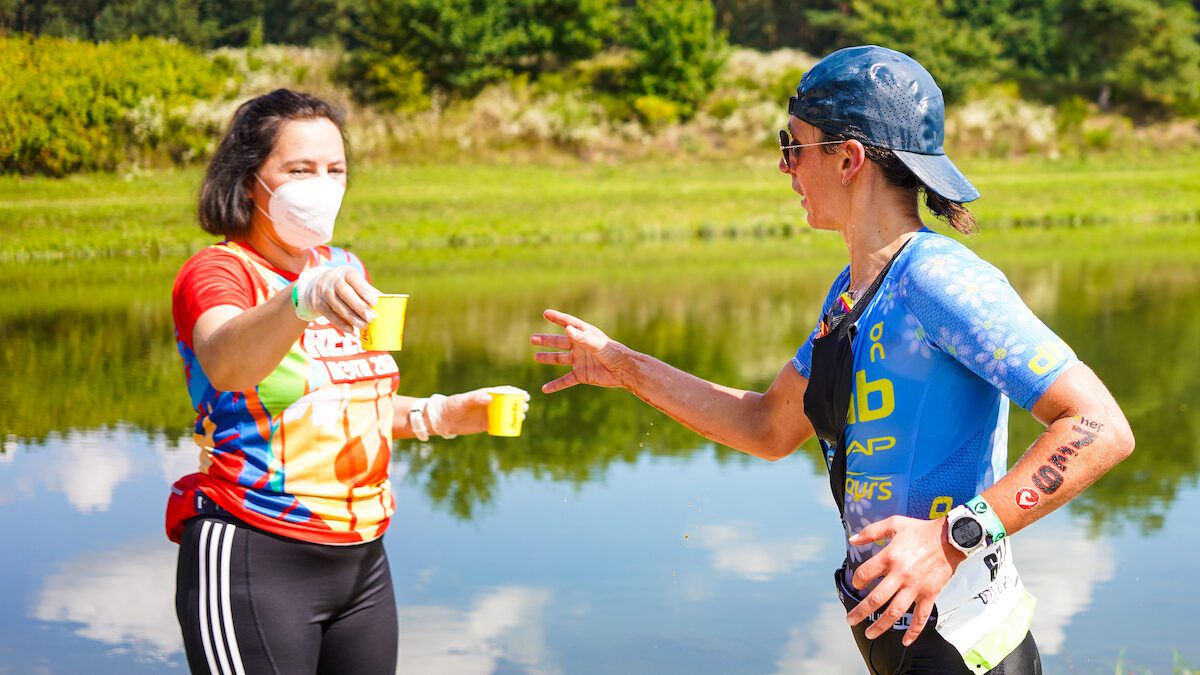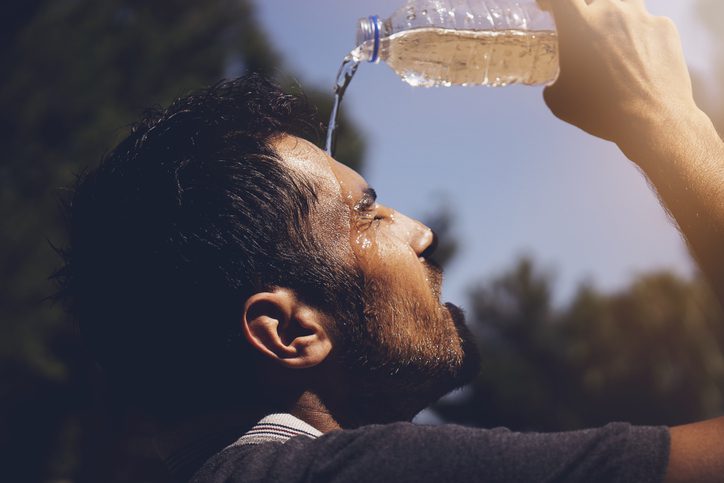How to come up with a personalized hydration strategy for Ironman and long-distance races
Get smart about your sweat before your next triathlon
 Photo by:
Kevin Mackinnon
Photo by:
Kevin Mackinnon
One of the most debated areas of sports nutrition is hydration, and discussion over how much and what to drink remains a hot topic. One thing that is agreed upon is that a one-size-fits-all approach is flawed, and we need personalized hydration strategies.
How much do you sweat?
Hydration has two components. The first is the volume (how much) you sweat and the second is the composition of your sweat. The volume of sweat is highly variable with weather and race conditions. Sweat composition is less variable, and the main concern is knowing how much sodium you are losing in your sweat, so you can adjust intake accordingly. The impact of sweat composition becomes more important as you race for longer-duration events, as sodium losses can cause issues in prolonged events. In this article, we’ll break down why you may want to consider getting a bit more scientific about your sweat, and how to do it.
Sweat rate is the simplest to measure. This will tell you the volume of fluid you are sweating, and this can determine the fluid volume you should aim to drink. Once you know how much you sweat, the goal with your hydration strategy is not to match sweat losses perfectly, as some degree of dehydration during training and racing is acceptable. The tolerance to dehydration may also vary from individual to individual and depend on the duration of the race. A good place to start is to ask yourself, have I ever suffered in training or racing because of dehydration? Telltale signs could be fatigue, dizziness, and decreased energy levels leading to a poor performance.
Sweat Rate
Measuring your sweat rate involves weighing yourself before and after exercise, keeping track of what you drink, and factoring that in. To measure your sweat rate, you can use an online calculator (for example, https://testyoursweat.ca/sweat-rate/). One thing to note is that you’ll want to re-do your sweat rate testing frequently, at different times of year, and in different conditions, as the volume of sweat will vary substantially with weather conditions.
What amount is acceptable for body weight loss? Most sources say when you lose more than two per cent of your body weight, there could be some impairment of performance due to dehydration. Of course, there is a lot of individual variation in this, and some athletes have a higher tolerance to dehydration than others. Keeping an eye on your performance at various levels of dehydration can be a strategy to learn how much you need to consume, and balance staying hydrated, over the risk of overhydration. A general recommendation of 400 to 800mL/hour has been suggested as a starting point for hydration quantity.
The caveat is that the lower end of this range may not be appropriate for faster, heavier and sweatier athletes, while conversely, the higher end of that range may be too much fluid for slower, lighter and less sweaty athletes.

Sweat composition
The second part of getting smart about your sweat is getting a better understanding of the composition of your sweat, mainly understanding whether you lose a lot of sodium in your sweat. This can determine how much sodium to include in your hydration plan. While many sports drinks offer sodium, the amounts can vary, and there are other ways to get sodium which we’ll discuss further in this article. The general guidelines for sodium consumption is 300 to 600 milligrams of sodium per hour, but this may not be enough for some athletes. The most notable issue with too little sodium is muscle cramping, but an improper sodium balance can also impair fluid absorption, cause blood pressure to drop, and lead to fatigue. It’s also important to note that a high fluid intake that is low in electrolytes, can also lead to a life-threatening condition called hyponatremia, in which the sodium level of the blood becomes too low.
Figuring out how much sodium you sweat is a bit harder than sweat rate testing. There are some telltale signs of being a salty sweater which include burning eyes, grainy-feeling skin, dogs licking your legs after a sweaty workout, and white streaks on clothing. To get a more accurate picture you may want to consider having your sweat tested.
Sweat Tests
I had the opportunity to sit down with Jason Hervey, a triathlon coach and sweat tester in Toronto, who offers the Precision Fuel & Hydration sweat test. This test method is similar to what is used in the clinical setting to diagnose Cystic Fibrosis. It’s simple, non-invasive and fast, taking about ½ hour. It will set you back about $200 to have this test done, but considering what we spend in other areas of the sport, it may be worthwhile if you are plagued by hydration issues. The downside is that if you aren’t near a testing site (Toronto and Vancouver in Canada), accessing this test is difficult.
There are other sweat testing products on the market that use sweat patches, which can be purchased online and sent into labs for testing, but getting accuracy with these methods is harder as there is more potential for user error. While patch testing could be a starting point for further understanding your sweat composition, it will need to be used carefully, and repeated in different conditions, to increase the accuracy of the results.
There are also several new wearable hydration test products on the market. Two companies (Nix Biosensor and hdrop) offer real-time testing which connects with your smartphone. Several of the hydration companies are currently testing these products with athletes to see if they are comparable to other methods, so these are options to watch for in the future.
Kona prep: Everything you need to know about heat acclimatization
Once you know approximately how much sodium you’re losing, you’ll want to consider the ways you can consume more sodium pre-, during, and post activity. Sodium can be obtained from your sports drink, sodium capsules, gels and other sport foods, as well as from real food. It may be harder to quantify real food sources, but these can be considered for pre and post training, to help with pre-loading and re-balancing electrolytes after heavy sweat losses. When it comes to sodium replacement during activity, the goal is not to fully replace sodium losses, but to test and learn the sweet spot where you’re consuming enough sodium to feel great to the finish line. As with all sports nutrition, practicing in training and in less important races is the best way to refine your strategy.
Alexis Williams is a registered dietician based in Burlington. You cand find out more about her and her services at www.fuelyourendurance.com
